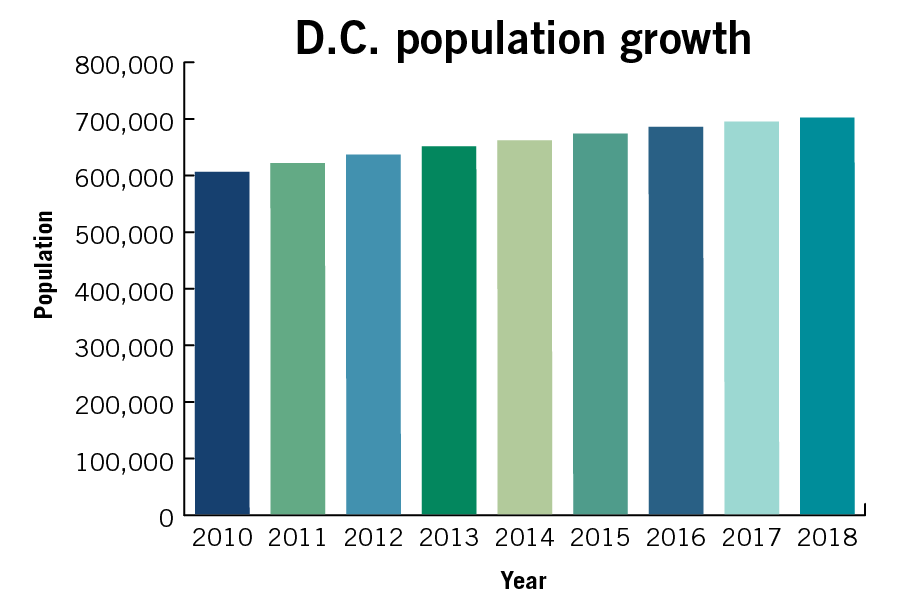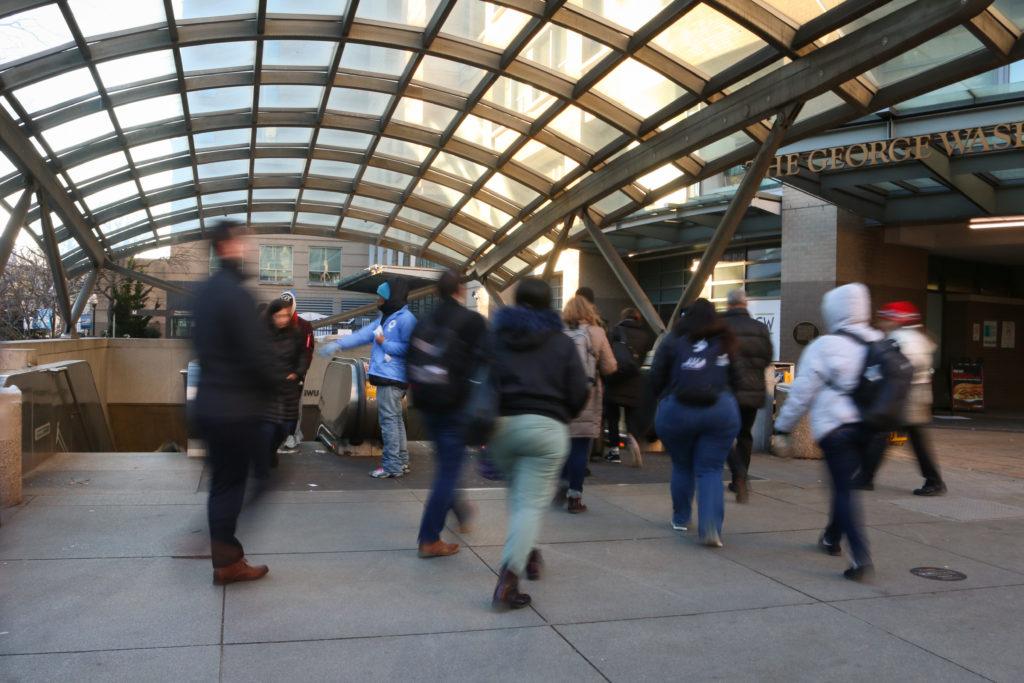The District’s population increased by less than 1 percent in 2018 – the lowest annual population increase in a decade.
D.C.’s population bump was majorly driven by natural increase, the number of deaths subtracted from the number of births, and international migration. The uptick was the 13th consecutive year that the number of D.C. residents has risen but also the third year that the growth rate has slowed, according to a report from the D.C. Office of the Chief Financial Officer released last week.
The city’s population has increased by about 1.8 to 2.5 percent each year between 2010 and 2015. But in the past three years, population growth has decelerated, increasing 1.7 percent between 2015 and 2016, 1.3 percent the next year and .97 percent between 2017 and 2018 – although last year’s increase was enough to push the city population over 700,000.
Demographics experts said the slowing growth in the District mirrors a recent nationwide trend of residents moving out of large urban areas because of a growing economy in suburbs.
Mekdy Alemayehu, a communications officer for the D.C. Office of Planning, said the report’s data is taken from the Census Bureau’s Population Estimates program. She said the office has not conducted an analysis on the recent population data but has made forecasts about future household, population and employment growth.

Emily Recko | Graphics Editor
Source: D.C. Office of the Chief Financial Officer
“The District will have an abundance of choices for transportation, entertainment, leisure, education, health, housing and food, which continue to attract and maintain more people,” Alemayehu said.
She said D.C.’s population will continue to increase because birth rates are staying steady while mortality rates decline. She said people will continue coming to the D.C. area to pursue job opportunities because of D.C.’s perception as a “world capital” and because middle-aged workers will fill senior positions as baby boomers retire.
“After the current federal instability ends, the District will return to historic patterns of job growth, but with a greater emphasis on private sector jobs,” she said.
John Sandberg, an associate professor in the department of global health, said D.C.’s population increases can be traced back to the “sloping” economy during the recession of 2008 and 2009. He said people may have flocked to D.C. a decade ago because federal jobs were a “safer bet” than private sector jobs during the recession.
“For any type of vendor, you’ve got to maintain a balance between the incentives and the services for those who are coming in,” he said. “So if the government starts hiring again and if there’s an economic downturn, federal work is always a desirable option for some people.”
Sandberg said the District is “responding positively” to its population growth by promoting jobs, housing and transportation services, but he added that rising living costs and fewer job opportunities have caused people to leave the area over the past few years.
“What made D.C. attractive during the recession makes it less attractive now,” Sandberg said.
Dowell Meyers, a professor of urban planning and demography at the University of Southern California, said the slowing growth in the District isn’t “unusual” compared to other major U.S. cities. He said that as the economy has stabilized and grown over the past few years, the country has returned to normal migration patterns in which residents move out of major cities and turn to the suburbs and rural areas.
“It’s part of broader demographic shifts that are happening nationwide,” Meyers said. “The District, in particular, is so small that it’s more volatile than the metro is a whole – it can accentuate certain trends. Housing prices can rise more sharply, more dramatic population change in small areas.”
Meyers also said the slowing population growth can be attributed to changes in the types of residents who live there. The District has seen a decline in the number of families with children, contributing to fewer residents in the long-term, he said.
He added that domestic migration is also no longer a source of growth for the District. About 1,000 more people left D.C. than those who moved to the District, according to the CFO report.
Meyers said domestic migration in D.C. is more complicated than other cities because population shifts are affected by job turnover after changes in party control.
“Your city is among the most complicated to analyze because of its unique economic base that’s very political and changes every four years,” Meyers said. “When you overlay that on all of the other dimensions of America that are happening, in a small space, it’s pretty dynamic.”




